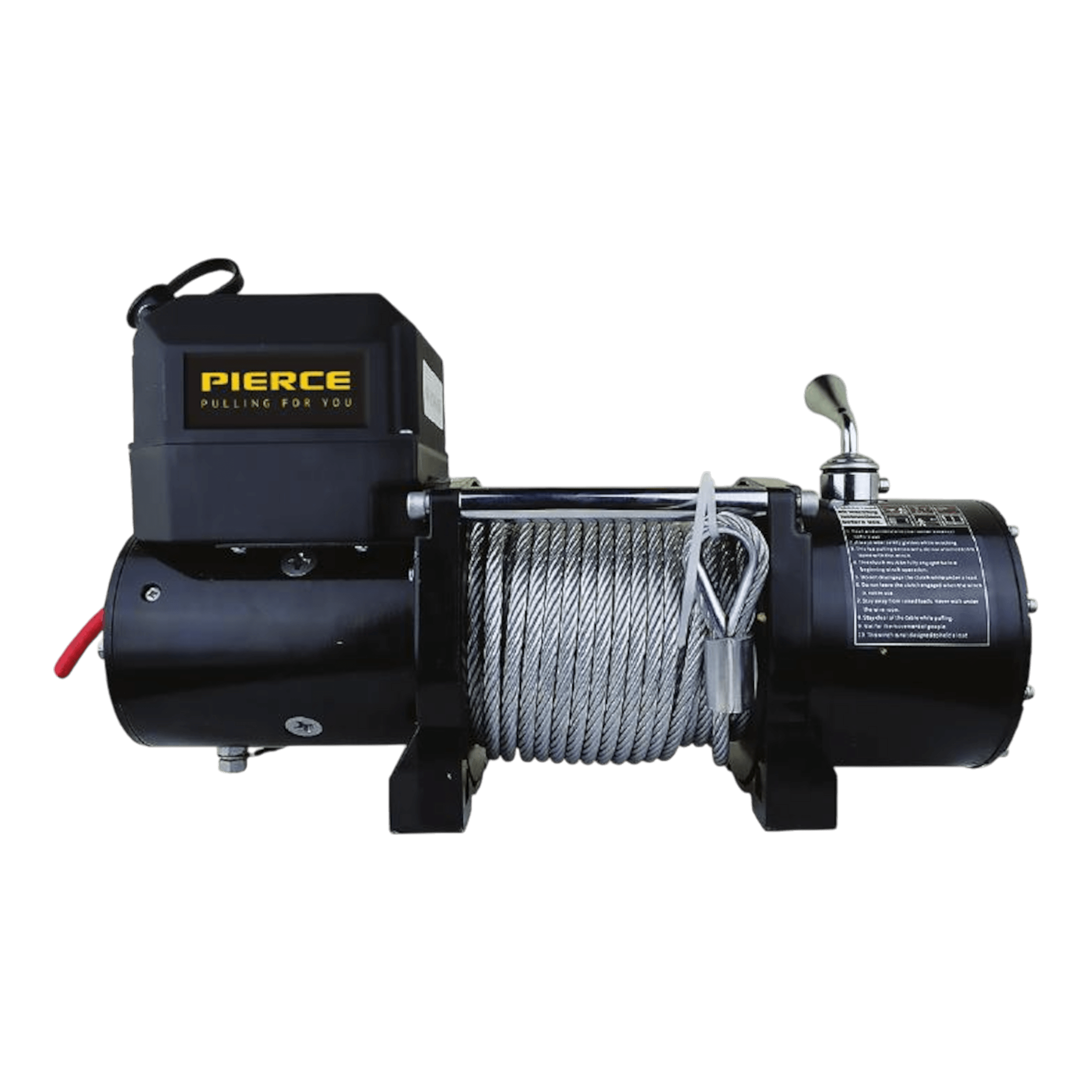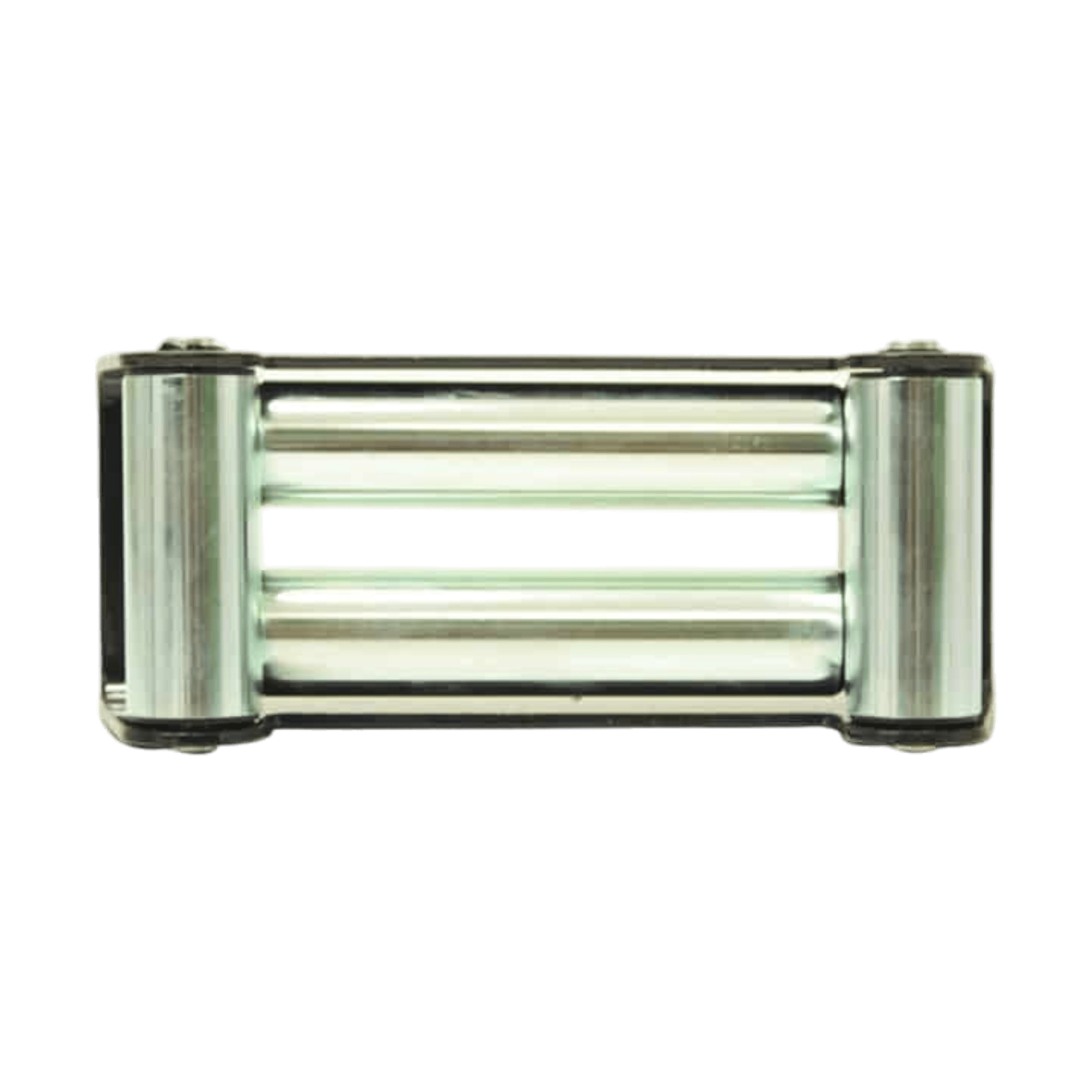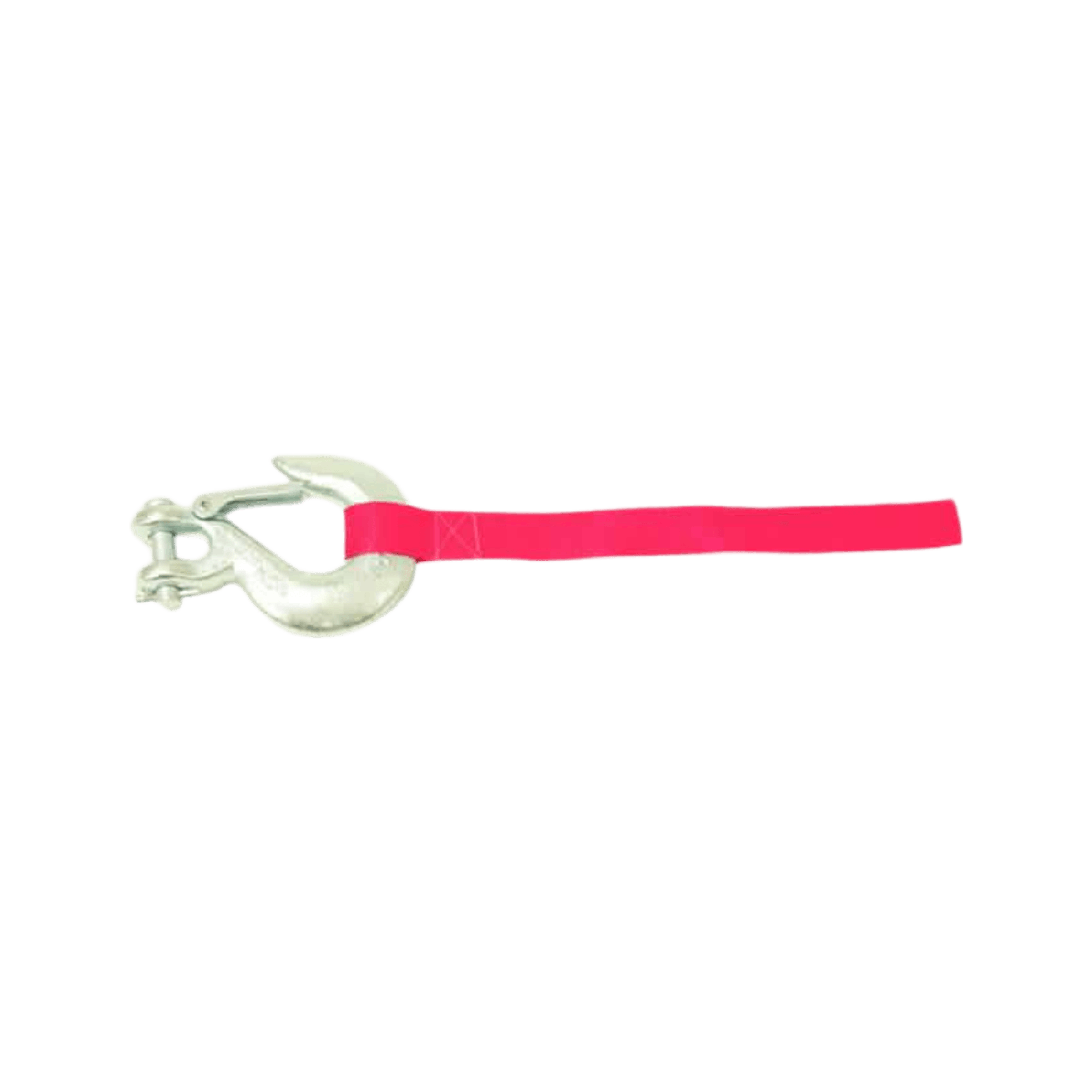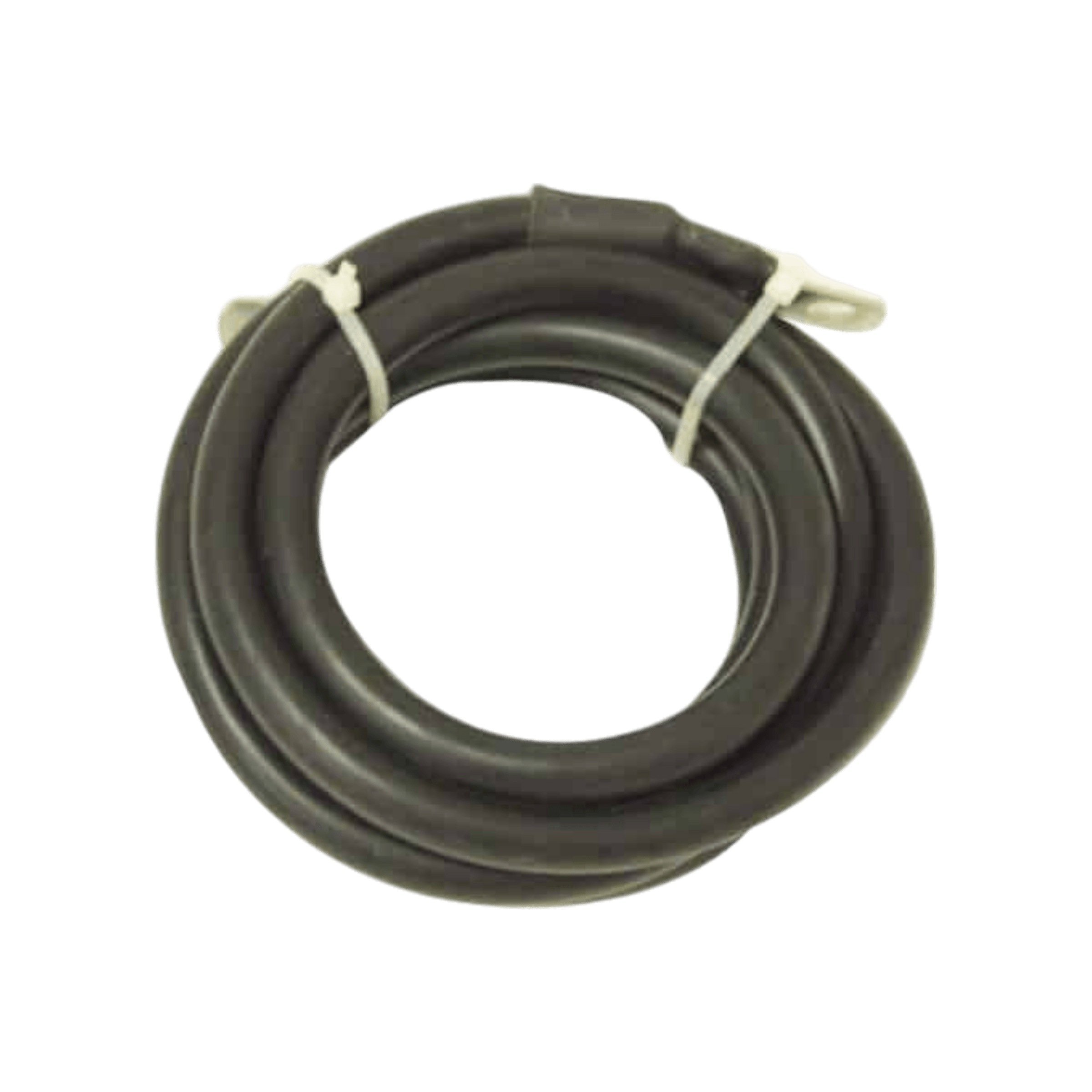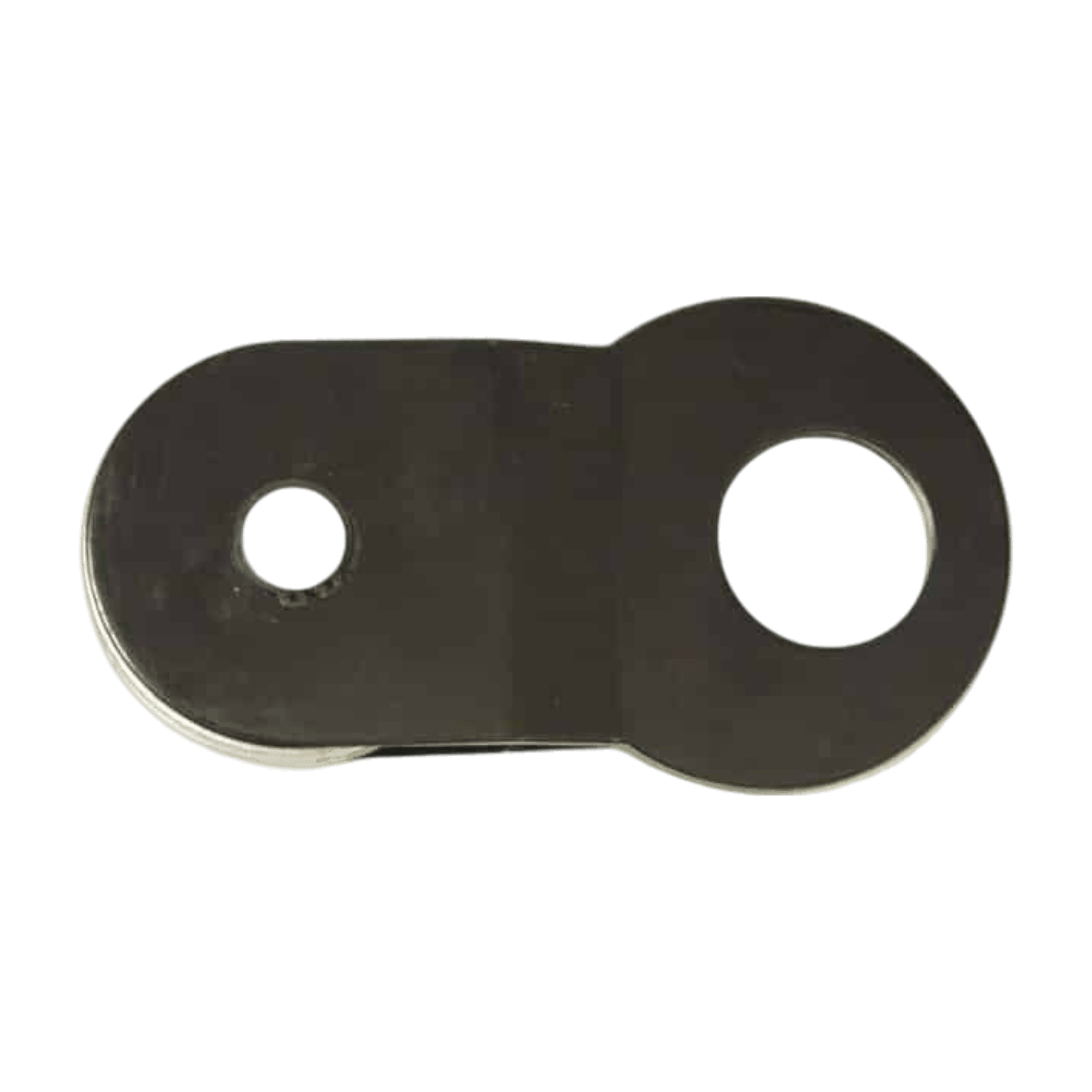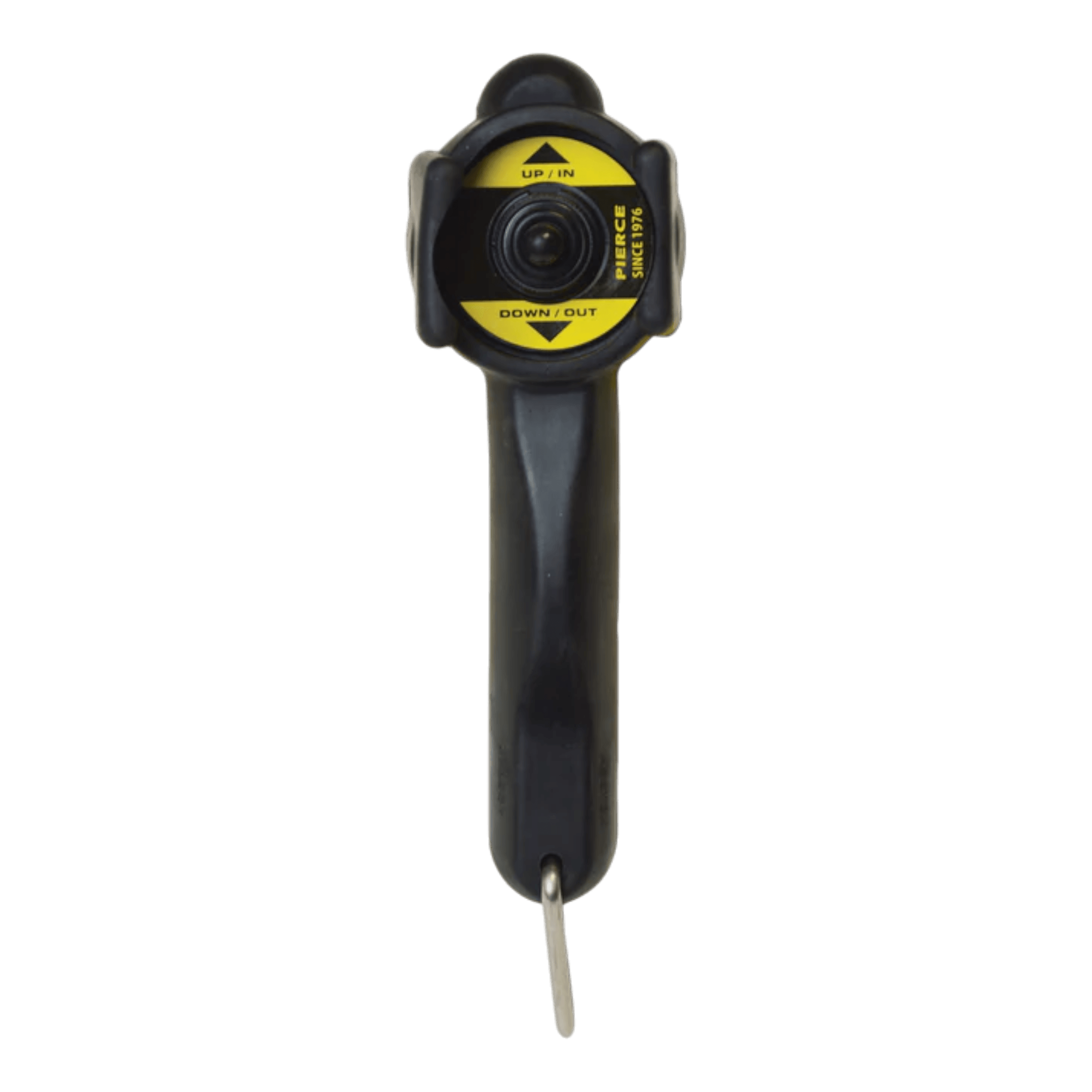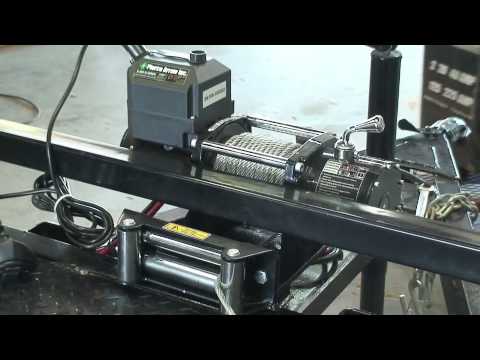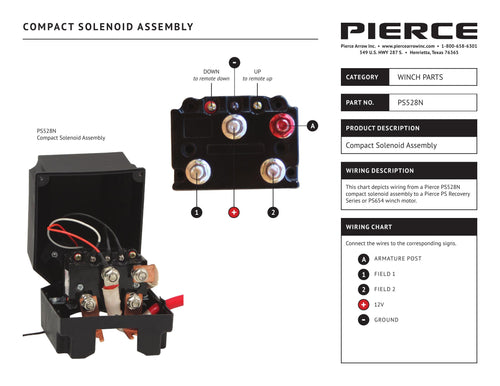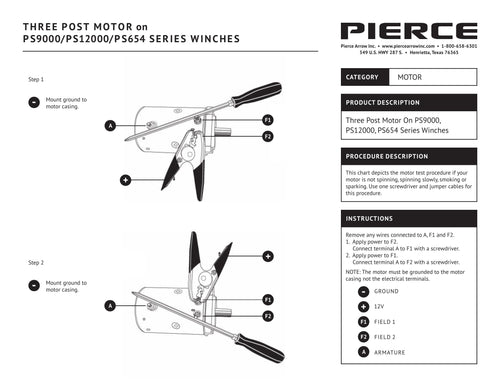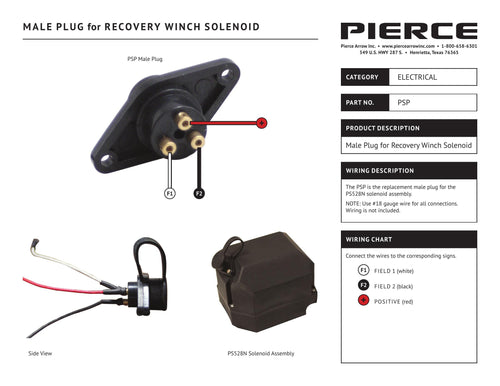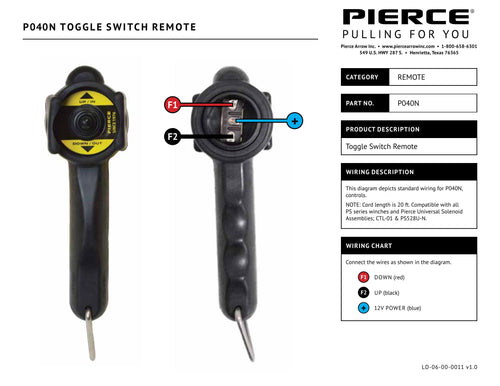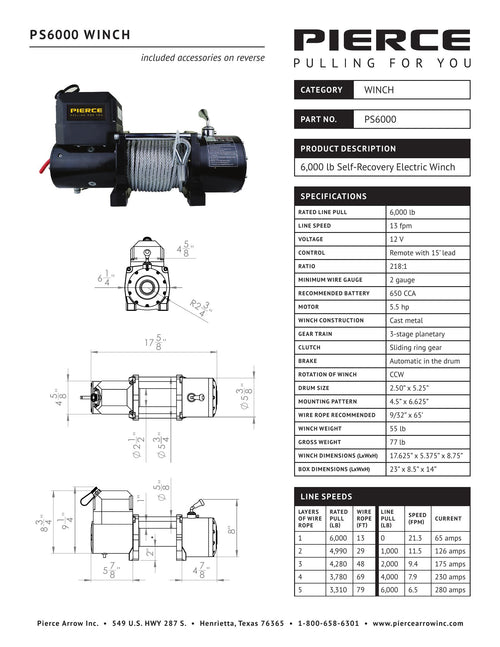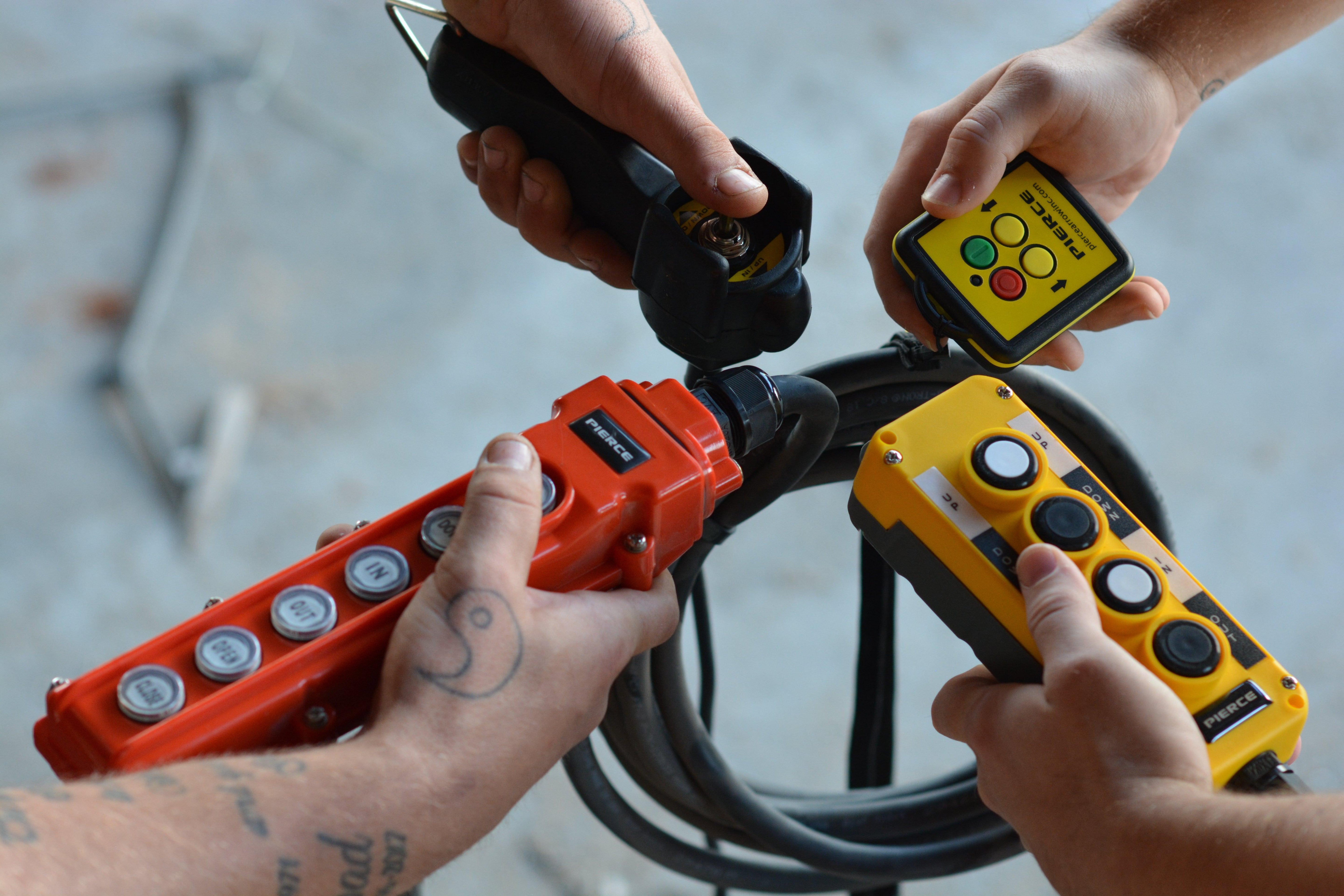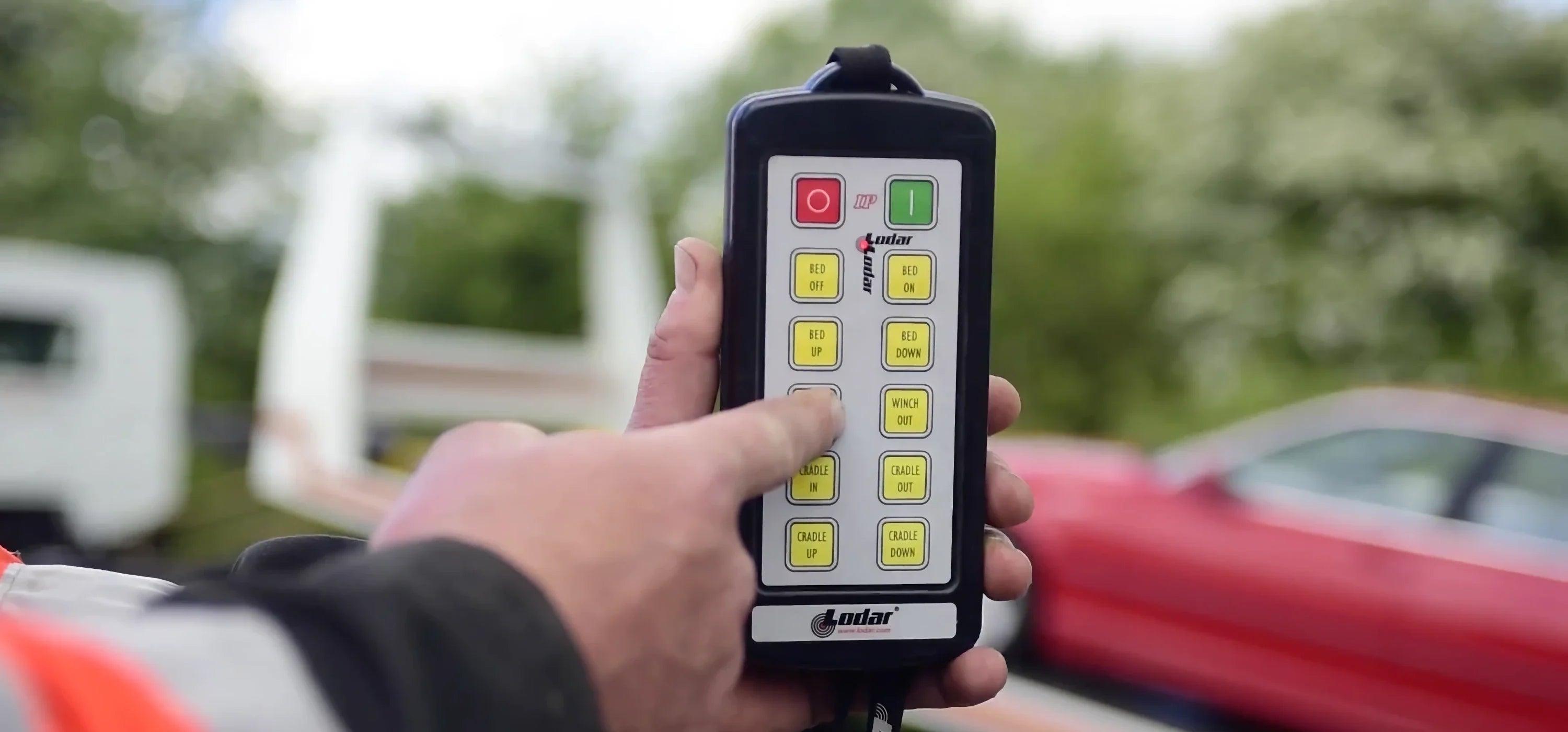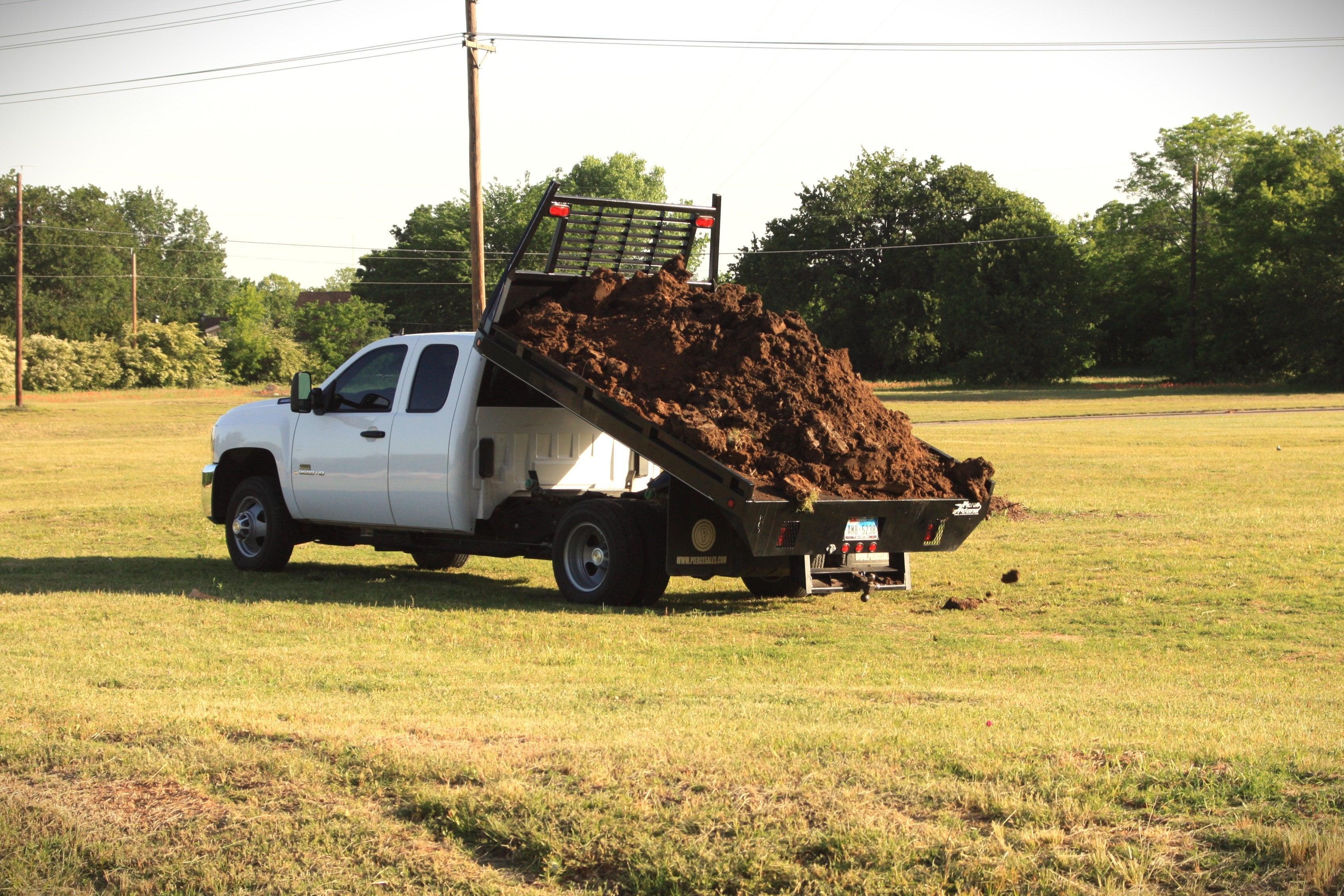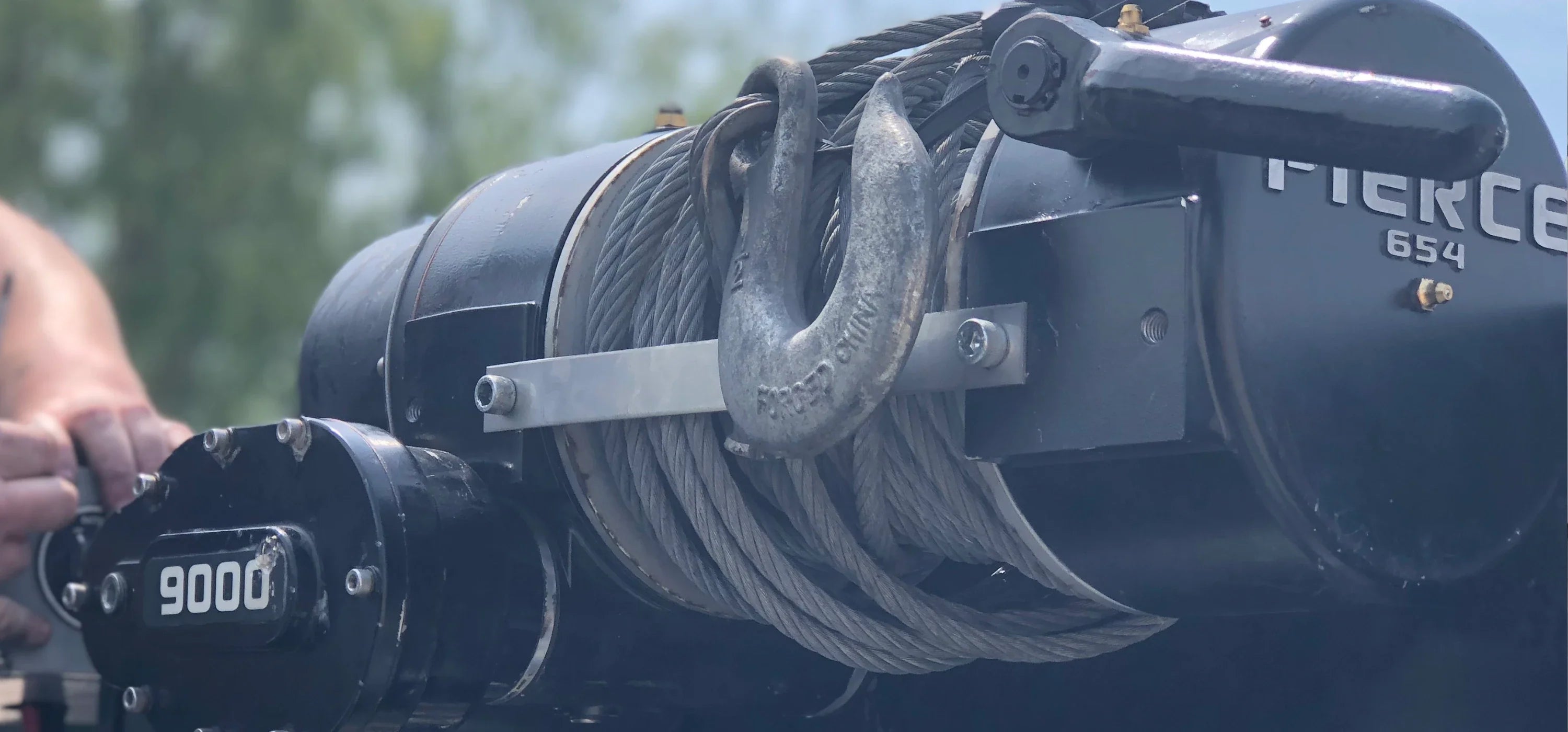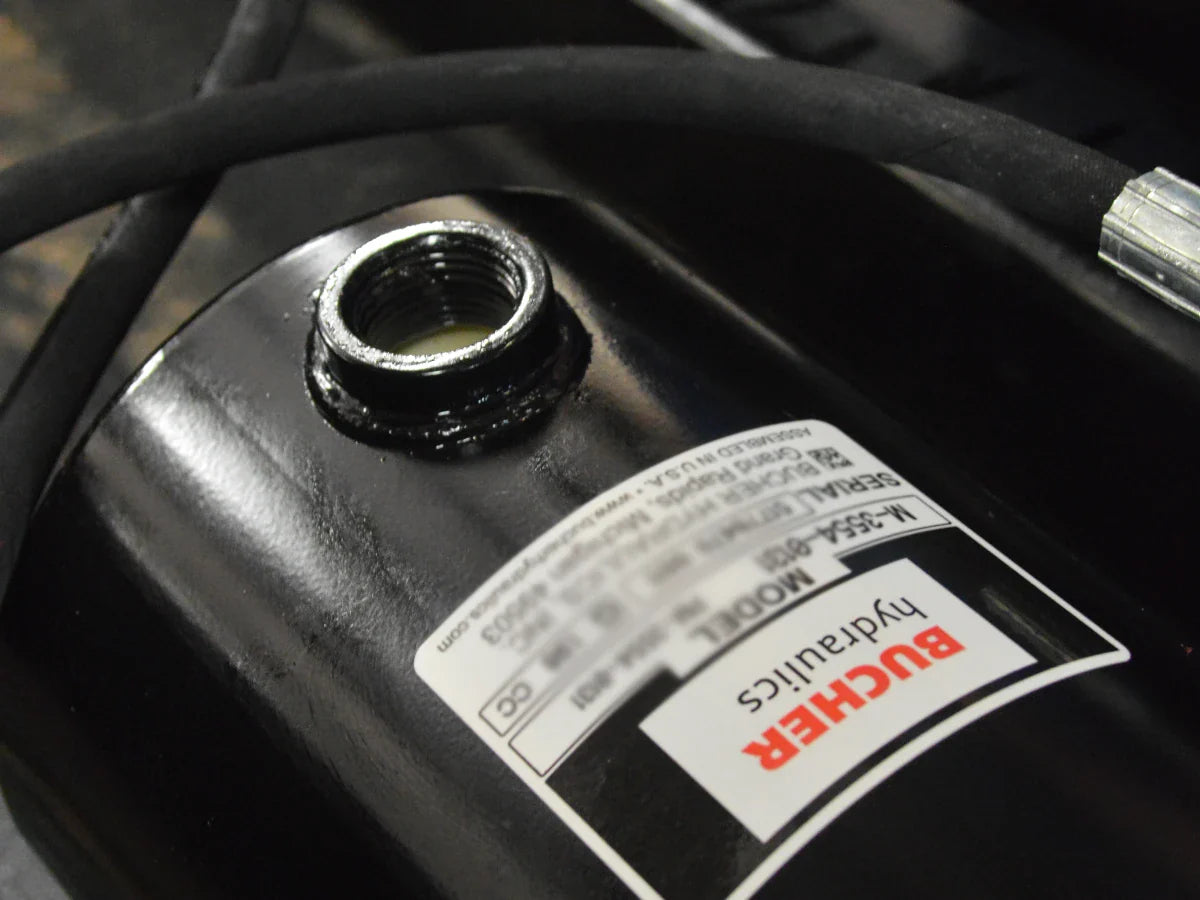Description
Compact 12V Recovery Winch with Smooth Planetary Power
The PIERCE PS6000 Recovery Winch delivers reliable 12V pulling strength in a compact, field-proven design built for light-duty recovery, car trailers, and equipment transport. Featuring a durable three-stage planetary gear system, it provides smooth torque transfer and efficient power delivery under load. The automatic load-holding brake ensures precise, safe control, while the heavy-duty steel housing stands up to repeated daily use. Designed for professionals who value performance and dependability, the PS6000 is the perfect entry into the PIERCE Recovery Winch lineup.
- 6,000 lb pulling capacity for light equipment and vehicle recovery
- 12V DC power delivers consistent, field-ready performance
- Three-stage planetary gear system provides smooth, efficient torque
- Automatic load-holding brake ensures safe, controlled operation
- Durable steel construction built for long-term reliability
Applications: Ideal for car trailers, small recovery vehicles, and equipment transport where dependable 12V pulling power is required.
⚠️ Never use a winch for lifting or moving people. Pulling and recovery use only.
Also available in higher capacities including the PS9000, PS12000, and PS20000. Browse all Recovery Winches.
Specifications
| Specification | Details |
|---|---|
| BRAKE TYPE | Automatic Built-in Drum Brake |
| CLUTCH TYPE | Sliding Ring Gear |
| CONSTRUCTION | Cast Metal |
| DRUM ROTATION | Counter-Clockwise (Underwound) |
| GEAR RATIO | 218:1 |
| GEAR TYPE | 3-Stage Planetary Gear |
| INCLUDED WIRE ROPE | 9/32" x 65' |
| MAX AMPS | 290 |
| MAX CAPACITY (LBS.) | 6000 |
| MAX LINE SPEED | 13 fpm |
| MOTOR (HP) | 5.5 |
| OPERATING VOLTAGE | 12 Volts DC |
| POWER SOURCE | Electric, DC |
| RECOMMENDED BATTERY | 650 CCA |
| RECOMMENDED WIRE | 2 gauge |
FAQs
Can I use a fuse to protect my winch and vehicle?
What precautions should I take when pulling heavy loads?
How can I provide a safe anchor point while winching?
How can I double my winch pulling capacity?
How much pulling power do I need from my winch?
How do I secure a load with my winch?
What maintenance is required on my winch?
How do I re-spool the wire rope onto my winch?
What should I do about my vehicles wheels while winching?
Videos
Warranty
Replacement Parts

6,000 lb Electric Planetary Winch Motor | Style 1
Expand your winch's capabilities with the powerful PIERCE PS6000 series winch replacement motor. Designed with a SLOTTED shaft, this motor offers superior performance and durability. With 3 electrical posts, you'll have the control you need to tak...
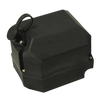
Compact Solenoid Assembly
With its reliable components and impressive 450 amp rating, the Compact Solenoid Assembly kit is the perfect replacement for your PIERCE PS series winch. You'll have peace of mind knowing that this kit comes complete with a cover, plug, solenoid, ...
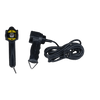
PIERCE PS Series Planetary Winch Control
The PIERCE Toggle Switch Remote is an essential component for PIERCE winches. It offers two functions, with a three-prong vulcanized plug and a 20-foot cord. This remote is specifically designed to work with the PIERCE PS Series Recovery winches. ...
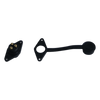
Electric Planetary Winches Plug | Style 1
It's crucial to have a reliable plug for operating your winch. The 3 prong plug for our PS series winch works perfectly with our PS528N solenoid assembly. Plus, the metal reinforcement plate will ensure that your plug won't break.

9,000/12,000 lb Electric Planetary Winch Motor | Style 2
This is a SPLINNED replacement winch motor for PS6000, PS9000 or PS12000 PIERCE recovery winches. This motor will not work on a PS654 series PIERCE winch.
